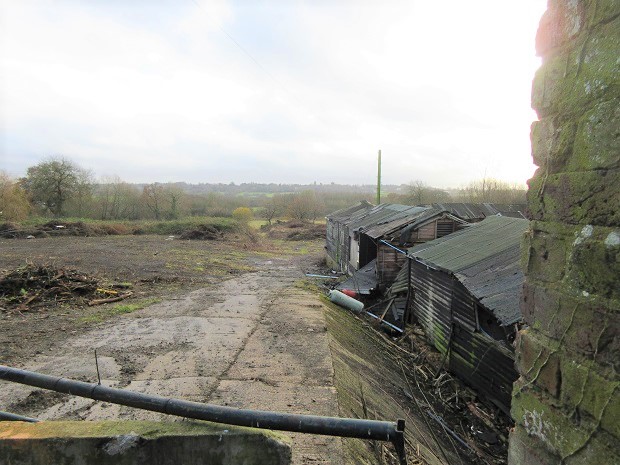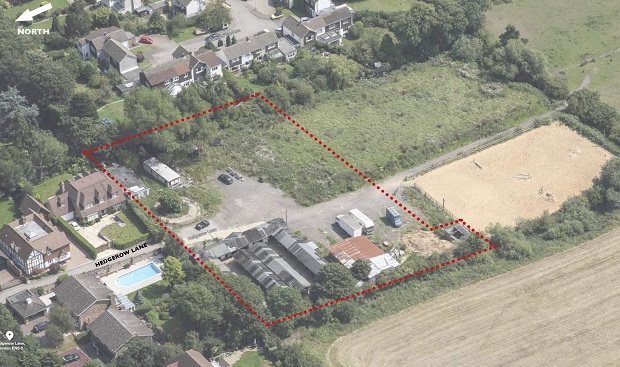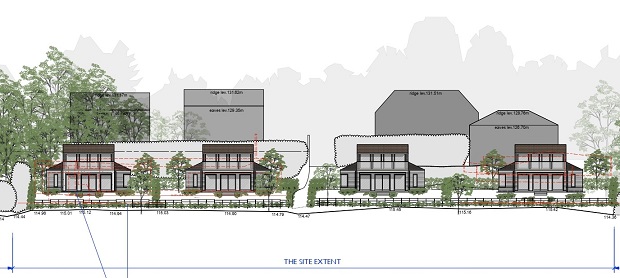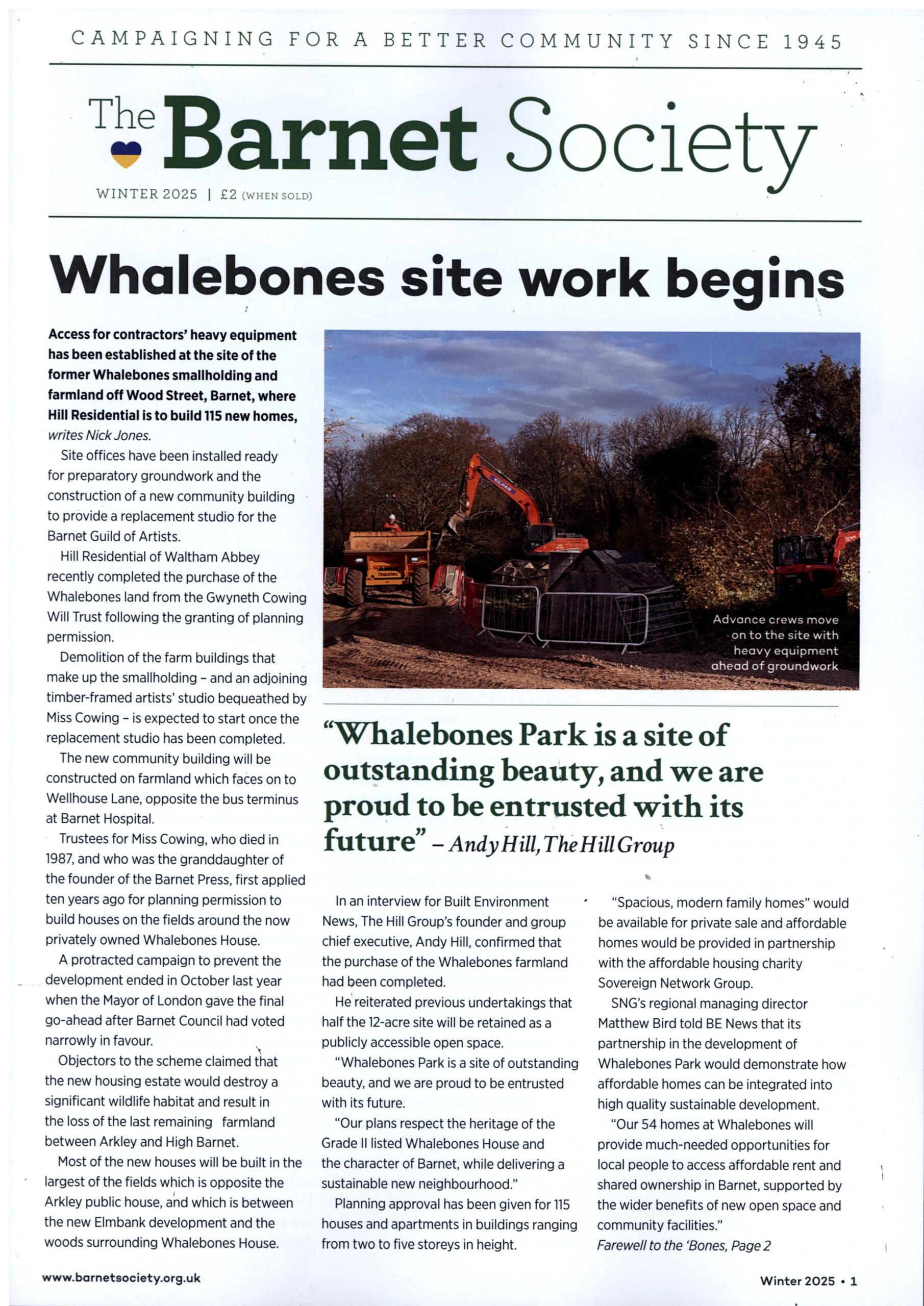New housing rejected at Arkley because of impact on Dollis Valley Green Belt

Plans to build four chalet-style houses on the site of a former stables and paddock have been been rejected by a planning inspector because of the impact they would have on the woodland and fields south of Arkley, across the Dollis Valley towards Totteridge.
After holding a public inquiry, Stephen Wilkinson decided that a proposal for residential development at Arkley Riding Stables in Hedgerow Lane, Barnet, would “reduce the openness of the Green Belt”, especially when viewed from locations such as Whitings Hill open space.
Heronslea (Arkley) Ltd was seeking approval for the construction of four detached houses, each of 1.5 storeys with the first floor located in the roof.
Arkley Riding Stables closed nine years ago and the wooden stable buildings, although in a dilapidated state, have provided nesting sites for swallows and perhaps other migratory birds attracted to the Dollis Valley countryside.

Among the issues considered by the inspector was whether there was any likelihood of the former equestrian centre being used again for livery stabling, or perhaps for exercising or training horses.
An equine charity was among those expressing interest, but these expressions of interest went no further.
There were no objections from the British Equestrian Federation or Sport England which accepted there was an over provision of stables in the Barnet area with only five of the 35 stables surveyed reporting that they were full.
Mr Wilkinson said he agreed the stables were surplus to requirements and that the constraints of the site – approached along Hedgerow Lane, off Barnet Road, Arkley – would not allow for other multi use sports facilities.
When considering the visual impact of the development, Mr Wilkinson considered the spread of houses across the site would have a greater impact than the existing buildings.

Three of the four houses would be above the tree line and “would be visible throughout the year and not just in the winter months”.
They would be seen as a separate group of properties and not against the backdrop of the existing properties as Heronslea suggested.
In his conclusion he accepted that while the loss of the stables would not conflict with the policy of retaining land and buildings for sport and recreation, and that while the development would not adversely impact on the character and appearance of the nearby housing, it would have a “greater impact on the openness of the Green Belt than the existing development.”
Robin Bishop, who leads for the Barnet Society on planning issues, welcomed the inspector’s rejection of Heronslea’s appeal, but he thought it was more than likely that the developers would return with a revised application.
Building free-standing villas with large gardens, which was typical for the Arkley area, would have contributed to the “creeping suburbanisation of the Green Belt.”
Mr Bishop said the only circumstances which might justify four houses on the site would be if they were affordable and of an exemplary standard of environmental design.
Ed Perry, who spoke at the inquiry on behalf of nearby residents in Hedgerow Lane and Saddlers Close, indicated that they were anxious to establish a dialogue with the developers.
They recognised the tumbledown stables were an eyesore and that they should be demolished, and perhaps replaced with some new building, but they opposed the construction of new houses across the rest of what was open land.
One of issues raised by the Barnet Society was impact of the proposed development on the variety of birds nesting in or passing through fields south of Arkley in the Dollis Valley.
Mr Bishop thought the lack of landscaping proposed for the site – and the neglect of other nearby paddocks – indicated the lack of thought for the protection of wildlife.
Bird watcher David Martens, founder of the Barnet swifts’ protection group, who observed swallows nesting in the dis-used stables this summer, said he would renew his objections to the development if a new application was submitted.

